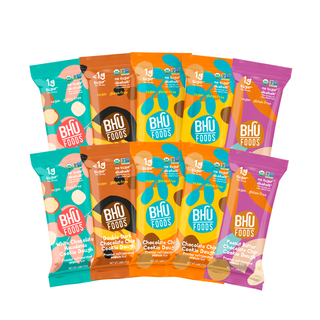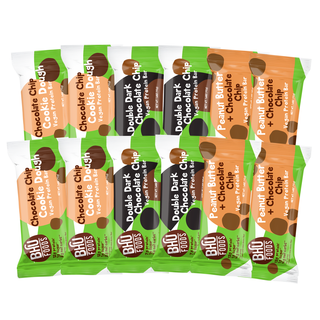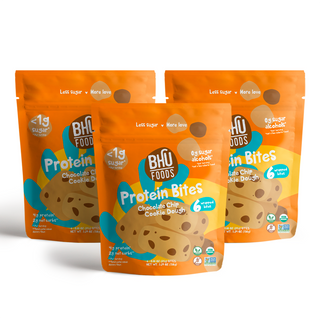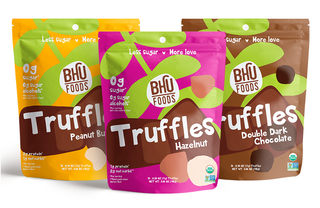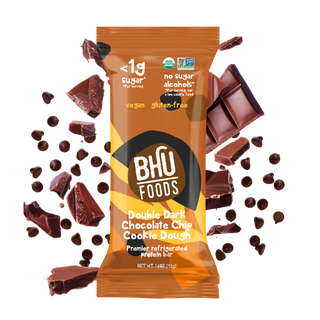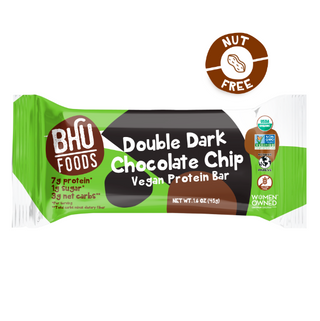
Many Branches, Same Tree - Exploring the Types of Yoga
Have you ever tried a yoga class, and were you surprised at how different it was from classes you’ve done in the past?
If so, you may have experienced some of the many types of yoga that are out there. While all of these types ultimately have the same roots, they provide completely different experiences for those who are practicing.
These various types range from the fast-paced challenge of Vinyasa or power yoga to the more relaxing and breath-focused Kundalini style. Discover these unique styles of yoga and consider which one seems ideal for your fitness goals.
While it’s easy to sort the various types of yoga by the intensity you can expect in class, each style also has its own specific traits. For example, Iyengar Yoga emphasizes proper alignment of each pose and utilizes various props like blocks and blankets. To truly understand the styles of yoga is to immerse yourself in the aspects that are most important, whether that’s breath, mindfulness, physical activity, or a unique combination of all three.
If you’re up for a medium to intense workout, then these are some of the most common styles of yoga to try. Note that these classes will almost always be divided by skill levels, so you don’t have to worry about an impossibly difficult class as a beginning student.

Hatha is a Sanskrit term that covers all of the physical poses found in yoga. Many styles have branched out from Hatha yoga, and you can expect an invigorating workout that focuses on holding each pose for a series of breaths from all of them. While other styles may go into more detail on the transitions or mindfulness aspects, Hatha Yoga is all about the connection between movement and breath, so it’s excellent for getting a well-rounded experience as a new student.
Hatha focuses on the relationship between your breath and movement, so try and fully be present in these poses, and focus on deep full breaths and detailed, deliberate movements.
Also widely referred to as Power Yoga, Ashtanga literally translates as “Eight Limb Path”. Featuring a challenging arsenal of poses and asanas, Ashtanga is known as the most intense form of yoga training. It’s also notable that Ashtanga yoga follows the same sequence of poses in each session, so with time and practice, you can even do Mysore-led classes where you go through the poses at your own pace.
Ashtanga is a real challenge for most people so it’s especially important to wear comfortable, unrestrictive clothing. Also, you don’t want to show up with food in your stomach, so avoid eating in the hour prior to class.
If you want to challenge your body not just from a series of tough poses, but from brutal temperatures as well, Bikram Yoga is the way to go. Created by Bikram Choudhury, this form of yoga consists of 26 different poses and is performed in temperatures that exceed 100 degrees. Often called “hot yoga”, a session of Bikram Yoga will be a detoxifying and intense experience that you won’t soon forget.
This is a hot and highly active style of yoga, so it’s best to prepare to sweat profusely. This means showing up well-hydrated and in cool clothes made from materials that breathe well.
Arguably the most popular form of yoga, vinyasa is a variation of Hatha Yoga but with one crucial difference: While Hatha Yoga stops in between poses, Vinyasa Flow smoothly transitions from one into the next, and each move is coordinated with your inhalations and exhalations. Vinyasa classes are often designed by the instructor so they offer a fun and challenging yoga experience every time.
Getting deep into the “flow” part of a vinyasa class is a rewarding part of the experience. Truly focus on timing your deep inhalations and exhalations with every movement, taking complete breaths while learning the poses.
While the four mentioned above are among the most common, there are other challenging yoga styles that each have their own aspects they focus on, including:
Iyengar Yoga: Strict style that focuses on alignment and execution of poses.
Anusara Yoga: A more approachable version of Iyengar with philosophy elements.
Acro Yoga: A modernized version of yoga in which you hang from ribbons.
Yoga has become popular for its fast-paced classes that give you a serious workout, but it also has its roots in meditation. In fact, almost all forms of meditation from the type you see in religious practices to Zen Buddhism, are derived from Yoga. The following types of yoga will leave you calm, relaxed, and at your most mindful.

Yin Yoga is proof that just because a style is slower and more passive does not mean that it’s easy. Yin is a style of yoga that provides a challenge by holding poses for 2-20 minutes at a time. Unlike most types of yoga, Yin Yoga works the connective tissues rather than the muscles. Introduced to the US in the 1970s, Yin Yoga has risen in popularity in recent years and is a great option for stimulating the tissues beyond your muscles.
Much of the time in Yin Yoga is spent holding challenging poses and wrestling with the feelings you have while in them. This provides an excellent opportunity to experience sensations you won’t find anywhere else, as you push your body and joints to the limit you’re comfortable with.
If your goals include stress relief and wanting to achieve a calm, relaxed state, then Kundalini Yoga is probably the best option for you. Featuring a strong emphasis on breathing techniques and chanting, Kundalini is considered a transformative style of yoga. This style also features kriyas, which are small movements that are typically repeated 108 times.
Kundalini Yoga is a true communion with your inner self. If the chanting, kriyas, or breathing techniques are unusual to you at first, remember that they’re tools for achieving a deeper level of calm and mindfulness.
Whether you prefer the continuous flow of the vinyasa style or the more relaxing and slow-pace of Yin Yoga, there are significant benefits that you can reap from each of the different types. Yoga is a lot of things to a lot of people, and the style that resonates most with you will depend on your goals, level of fitness, and personal preferences. Ultimately, all forms of yoga can help you relax and achieve some semblance of mindfulness in your otherwise chaotic world.
If so, you may have experienced some of the many types of yoga that are out there. While all of these types ultimately have the same roots, they provide completely different experiences for those who are practicing.
These various types range from the fast-paced challenge of Vinyasa or power yoga to the more relaxing and breath-focused Kundalini style. Discover these unique styles of yoga and consider which one seems ideal for your fitness goals.
Exploring the Many Styles of Yoga
While it’s easy to sort the various types of yoga by the intensity you can expect in class, each style also has its own specific traits. For example, Iyengar Yoga emphasizes proper alignment of each pose and utilizes various props like blocks and blankets. To truly understand the styles of yoga is to immerse yourself in the aspects that are most important, whether that’s breath, mindfulness, physical activity, or a unique combination of all three.
The Most Active Styles of Yoga
If you’re up for a medium to intense workout, then these are some of the most common styles of yoga to try. Note that these classes will almost always be divided by skill levels, so you don’t have to worry about an impossibly difficult class as a beginning student.

Hatha Yoga - Common style that focuses on movement and breath
Hatha is a Sanskrit term that covers all of the physical poses found in yoga. Many styles have branched out from Hatha yoga, and you can expect an invigorating workout that focuses on holding each pose for a series of breaths from all of them. While other styles may go into more detail on the transitions or mindfulness aspects, Hatha Yoga is all about the connection between movement and breath, so it’s excellent for getting a well-rounded experience as a new student.
Tip for an Effective Hatha Yoga Class
Hatha focuses on the relationship between your breath and movement, so try and fully be present in these poses, and focus on deep full breaths and detailed, deliberate movements.
Ashtanga Yoga - A demanding style of yoga that is not best for beginners
Also widely referred to as Power Yoga, Ashtanga literally translates as “Eight Limb Path”. Featuring a challenging arsenal of poses and asanas, Ashtanga is known as the most intense form of yoga training. It’s also notable that Ashtanga yoga follows the same sequence of poses in each session, so with time and practice, you can even do Mysore-led classes where you go through the poses at your own pace.
Tip for an Invigorating Ashtanga Yoga Class
Ashtanga is a real challenge for most people so it’s especially important to wear comfortable, unrestrictive clothing. Also, you don’t want to show up with food in your stomach, so avoid eating in the hour prior to class.
Bikram Yoga - Performed in 106-degree temperatures, so expect hot, intense classes
If you want to challenge your body not just from a series of tough poses, but from brutal temperatures as well, Bikram Yoga is the way to go. Created by Bikram Choudhury, this form of yoga consists of 26 different poses and is performed in temperatures that exceed 100 degrees. Often called “hot yoga”, a session of Bikram Yoga will be a detoxifying and intense experience that you won’t soon forget.
Tip for an Exhilarating Bikram Yoga Class
This is a hot and highly active style of yoga, so it’s best to prepare to sweat profusely. This means showing up well-hydrated and in cool clothes made from materials that breathe well.
Vinyasa Flow - Popular style of yoga that offers a fun mix of poses
Arguably the most popular form of yoga, vinyasa is a variation of Hatha Yoga but with one crucial difference: While Hatha Yoga stops in between poses, Vinyasa Flow smoothly transitions from one into the next, and each move is coordinated with your inhalations and exhalations. Vinyasa classes are often designed by the instructor so they offer a fun and challenging yoga experience every time.
Tip for Getting the Most Out of Your Vinyasa Flow Class
Getting deep into the “flow” part of a vinyasa class is a rewarding part of the experience. Truly focus on timing your deep inhalations and exhalations with every movement, taking complete breaths while learning the poses.
Other Active Styles of Yoga
While the four mentioned above are among the most common, there are other challenging yoga styles that each have their own aspects they focus on, including:
Iyengar Yoga: Strict style that focuses on alignment and execution of poses.
Anusara Yoga: A more approachable version of Iyengar with philosophy elements.
Acro Yoga: A modernized version of yoga in which you hang from ribbons.
The Relaxing and Restorative Styles of Yoga
Yoga has become popular for its fast-paced classes that give you a serious workout, but it also has its roots in meditation. In fact, almost all forms of meditation from the type you see in religious practices to Zen Buddhism, are derived from Yoga. The following types of yoga will leave you calm, relaxed, and at your most mindful.

Yin Yoga - Both therapeutic and challenging, this style holds poses for a longer interval.
Yin Yoga is proof that just because a style is slower and more passive does not mean that it’s easy. Yin is a style of yoga that provides a challenge by holding poses for 2-20 minutes at a time. Unlike most types of yoga, Yin Yoga works the connective tissues rather than the muscles. Introduced to the US in the 1970s, Yin Yoga has risen in popularity in recent years and is a great option for stimulating the tissues beyond your muscles.
Tip for an Enlightening Yin Yoga Class
Much of the time in Yin Yoga is spent holding challenging poses and wrestling with the feelings you have while in them. This provides an excellent opportunity to experience sensations you won’t find anywhere else, as you push your body and joints to the limit you’re comfortable with.
Kundalini Yoga - Meditation practice that emphasizes chanting and breath control
If your goals include stress relief and wanting to achieve a calm, relaxed state, then Kundalini Yoga is probably the best option for you. Featuring a strong emphasis on breathing techniques and chanting, Kundalini is considered a transformative style of yoga. This style also features kriyas, which are small movements that are typically repeated 108 times.
Tip for Enjoying Kundalini Yoga
Kundalini Yoga is a true communion with your inner self. If the chanting, kriyas, or breathing techniques are unusual to you at first, remember that they’re tools for achieving a deeper level of calm and mindfulness.
Finding the Style that Suits Your Fitness Goals Best
Whether you prefer the continuous flow of the vinyasa style or the more relaxing and slow-pace of Yin Yoga, there are significant benefits that you can reap from each of the different types. Yoga is a lot of things to a lot of people, and the style that resonates most with you will depend on your goals, level of fitness, and personal preferences. Ultimately, all forms of yoga can help you relax and achieve some semblance of mindfulness in your otherwise chaotic world.




